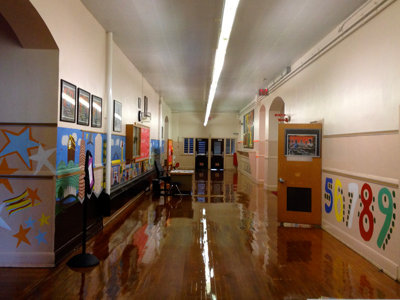One of the legacies of outgoing MPS Superintendent Gregory Thornton will be the re-centralization of many items previously included in individual school budgets (aka “board budgets”).
Over the past few years, the district has removed some items from school budgets and gone back to funding them centrally. Things like long-term disability and maternity leaves are no longer paid for out of individual school budgets, for example.
A year ago, the district removed the required principal and school secretary from school-level budgets and added a .2 (one day a week) bookkeeper. And funding for special education teachers was also centralized.
This budget season (FY15), Title I (high poverty) and Title I Targeted Assistance (some poverty) schools are getting two new centralized positions (for the upcoming school year). One is a 30-hour paraprofessional to boost parent engagement at every MPS school.
Another is a School Support Teacher, who will work to coordinate assessments (tests, that is), plan assessment-related professional development for school staff and do mentoring work with teachers in the classroom. This position, I hear, will more resemble that of an implementer than that of a curriculum generalist, which was an administrative position.
Two more adults in each building will be very good news indeed.
While specific schools have found that some re-centralized lines have been a boon, the effects may be mixed in other buildings.
For example, if a school had a building engineer go out on long-term disability before the re-centralization, the budget there took a hit because the school had to pay for two engineers (the one who was out and the replacement). That no longer happens, which is a plus.
But as items become funded centrally, the per-pupil funding to the schools drops (it is currently at about $3,900) and, if your school isn’t facing a long-term leave, the deal might sound less attractive.
As my colleague Jay Bullock notes, school safety has been centralized for two years now, giving administration greater flexibility to move personnel to hotspots but undercutting relationships safety aides build with students in a school – a plus and a minus.
With re-centralization, special education teachers are assigned based on the number of students with IEPs in a school. In some cases that led to a school gaining a teacher. But, there might be examples of the reverse happening, too.
Schools are now getting more funding (.4, meaning two more days) for art, music and phy ed. – including a new $10 per pupil allotment for supplies – though the mandated .2 – one day a week – librarians might still be a bit meager at many schools. While some schools make up for this by staffing the library with parent volunteers or paraprofessionals, others don’t have the luxury of either.
Some of that money likely comes courtesy of lower personnel costs after a slew of retirements over the past couple years. Also, word on the street is that some schools are running a deficit this year, which could have repercussions in the future.
What hasn’t changed is that school-level budgets are a complicated dance for principals. There, still, just isn’t enough money to fund everything.
At one school I talked to there’s a debate going on. With large class sizes, teachers depend on paraprofessional aides in the classroom. Does the school hire two more this coming year and slash the strings and band lessons that dozens and dozens of kids currently enjoy, or does it keep those music programs and deprive classroom teachers of much needed extra help?
Questions like these are not easily answered and the “right” answer depends on who you ask.
In related news, according to the district’s budget preparation guidelines, MPS is transitioning away from funding the High Scope early childhood education curriculum.
“There will no longer be dedicated High Scope funding, centralized support or High Scope specific professional development,” the guidelines state. “High Scope-funded staff and other expenses have been removed from Board budgets. To ease this transition, support equivalent to 75 percent of each school’s FY14 High Scope allocation has been included in its Board budget.”
Teachers, parents, principals, I’m eager to hear how your budgets look for the coming year. Drop me an email and let me know.


 i evaluate to yes even if there's no image
i evaluate to yes even if there's no image  i evaluate to yes even if there's no image
i evaluate to yes even if there's no image  i evaluate to yes even if there's no image
i evaluate to yes even if there's no image  i evaluate to yes even if there's no image
i evaluate to yes even if there's no image  i evaluate to yes even if there's no image
i evaluate to yes even if there's no image  i evaluate to yes even if there's no image
i evaluate to yes even if there's no image 